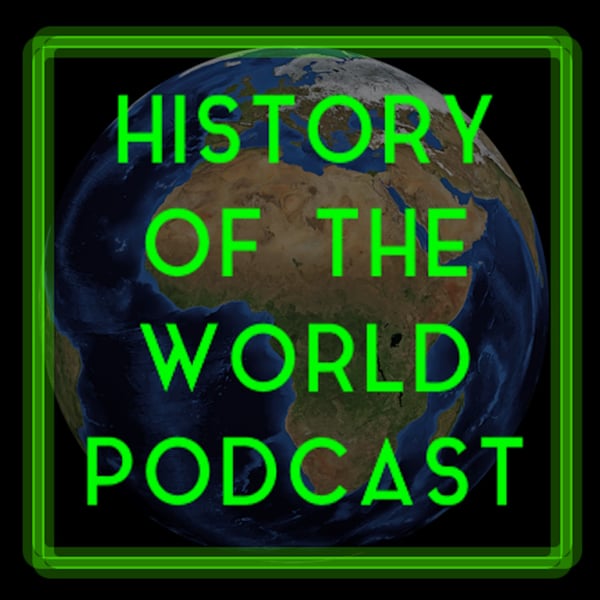Vol 4 Ep 66 - China: Song Dynasty
History of the World podcast
Chris Hasler
4.8 • 971 Ratings
🗓️ 15 January 2024
⏱️ 42 minutes
🧾️ Download transcript
Summary
907 - 1279 - The story of the Song Dynasty takes us from the fall of the Tang Dynasty through to the conquest of China by the Mongols. We will take a closer look at the imperial examination process, innovations in printing, and some controversial changes in national policies.
--- Send in a voice message: https://podcasters.spotify.com/pod/show/historyoftheworldpodcast/messageTranscript
Click on a timestamp to play from that location
| 0:00.0 | The History of the World Podcast, written and presented by Chris Hasler. Volume 4, The Medieval World. |
| 0:24.3 | Episode 66, The Song Dynasty. Oh, The Tang Dynasty of China emerged from the remnants of the Sui Dynasty in the early 7th century |
| 0:59.3 | and quickly rose to become one of the more affluent nations in the world with its access to the Silk Road |
| 1:06.4 | being a great advantage. Strong leaders oversaw cultural innovations, technological advancements and territorial expansion. |
| 1:17.0 | However, this also led to a large number of ethnic groups and families being integrated into the Tang sphere of influence. |
| 1:27.7 | Tang, China was overstretched and local warlords grew in power and rebelliousness as they saw an opportunity |
| 1:36.0 | to oppose the Central Imperial Authority and gain followings. This caused Tang China to fragment in the 10th century. |
| 1:50.0 | One of the warlords called Ju Wen decided to assist the imperial court by betraying the |
| 1:56.4 | rebellion of one Huang Chow and by doing so Ju Wen gained the favour of the Chinese Emperor. |
| 2:05.0 | Ju Wen used this favour to raise his own stock and he would use this power for his own |
| 2:12.0 | self-promotion. Due Wen then betrayed the |
| 2:16.2 | Imperial Court and systematically organized for members of the Imperial Royal Family |
| 2:21.8 | to be murdered so that he could ultimately seize the role of Emperor for himself. |
| 2:28.0 | He would rule as Emperor Tezou, and the Tang Dynasty was displaced. The new dynasty would be the Liang Dynasty |
| 2:39.3 | called Ho-Lang or later Liang to distinguish it from the Leang dynasty that ruled over southern China during the sixth century. |
| 2:49.2 | The irony was that the fall of the Tang dynasty saw China fragment and the area which Emperor Tizus, later |
| 2:56.7 | Leang dynasty ruled over was restricted to a much smaller area in northern China centered on the Yellow River Valley. |
| 3:05.3 | The rest of China and particularly the South fragmented into small states so we |
| 3:10.8 | return to the post Han and pre-Sway days of a disunified China. |
| 3:18.5 | The oncoming period was not a good period for China as no centralization meant that the infrastructure of |
| 3:25.5 | unified China was somewhat abandoned for example flood defenses were not |
| 3:30.3 | maintained leading to agricultural difficulties. |
... |
Please login to see the full transcript.
Disclaimer: The podcast and artwork embedded on this page are from Chris Hasler, and are the property of its owner and not affiliated with or endorsed by Tapesearch.
Generated transcripts are the property of Chris Hasler and are distributed freely under the Fair Use doctrine. Transcripts generated by Tapesearch are not guaranteed to be accurate.
Copyright © Tapesearch 2025.

